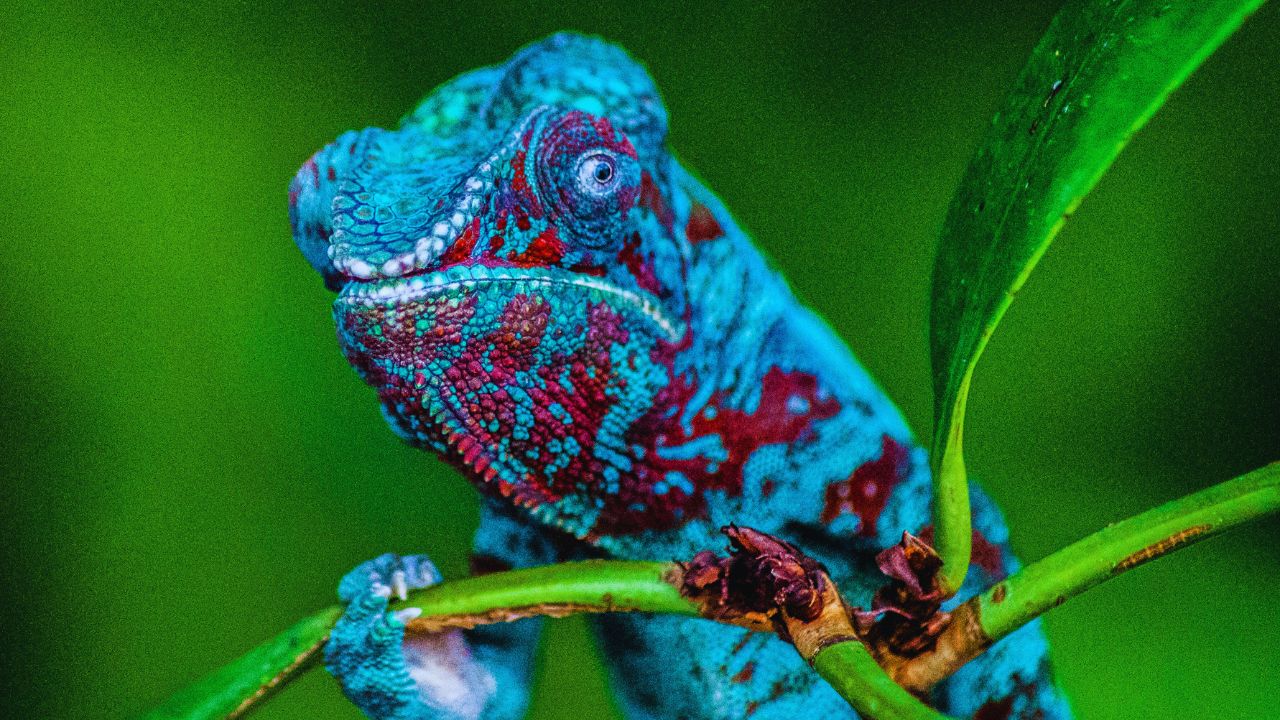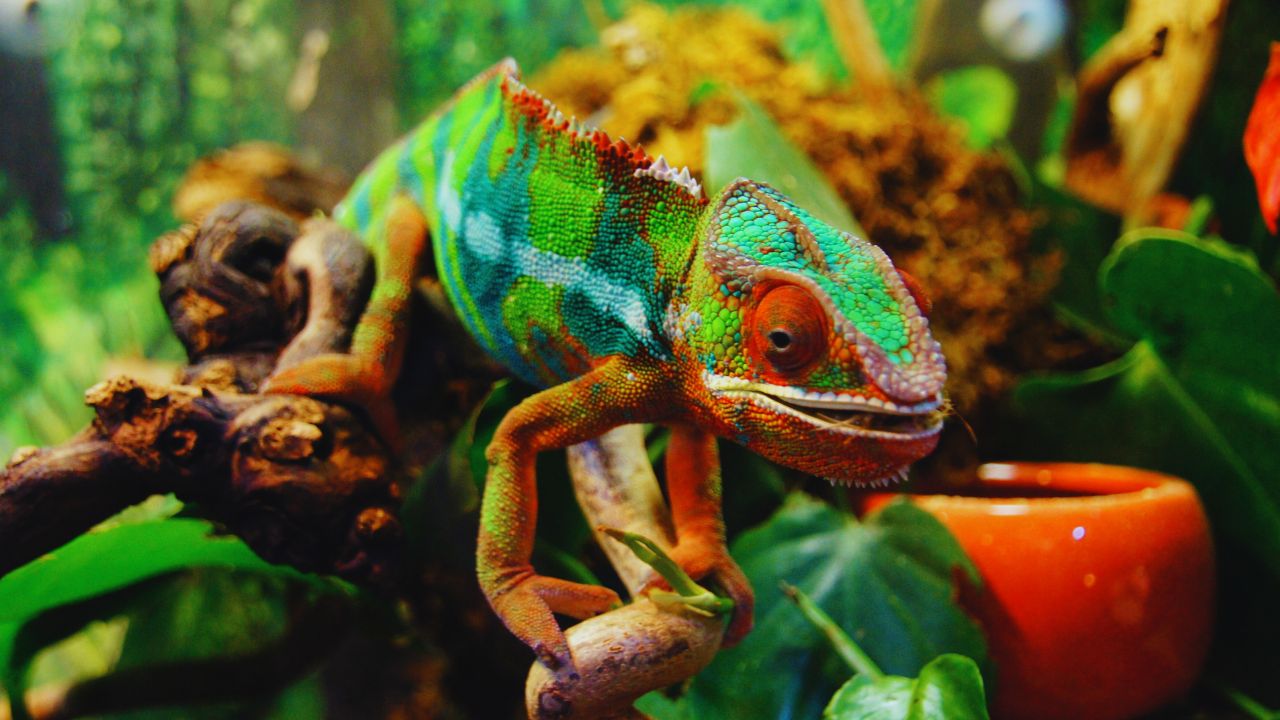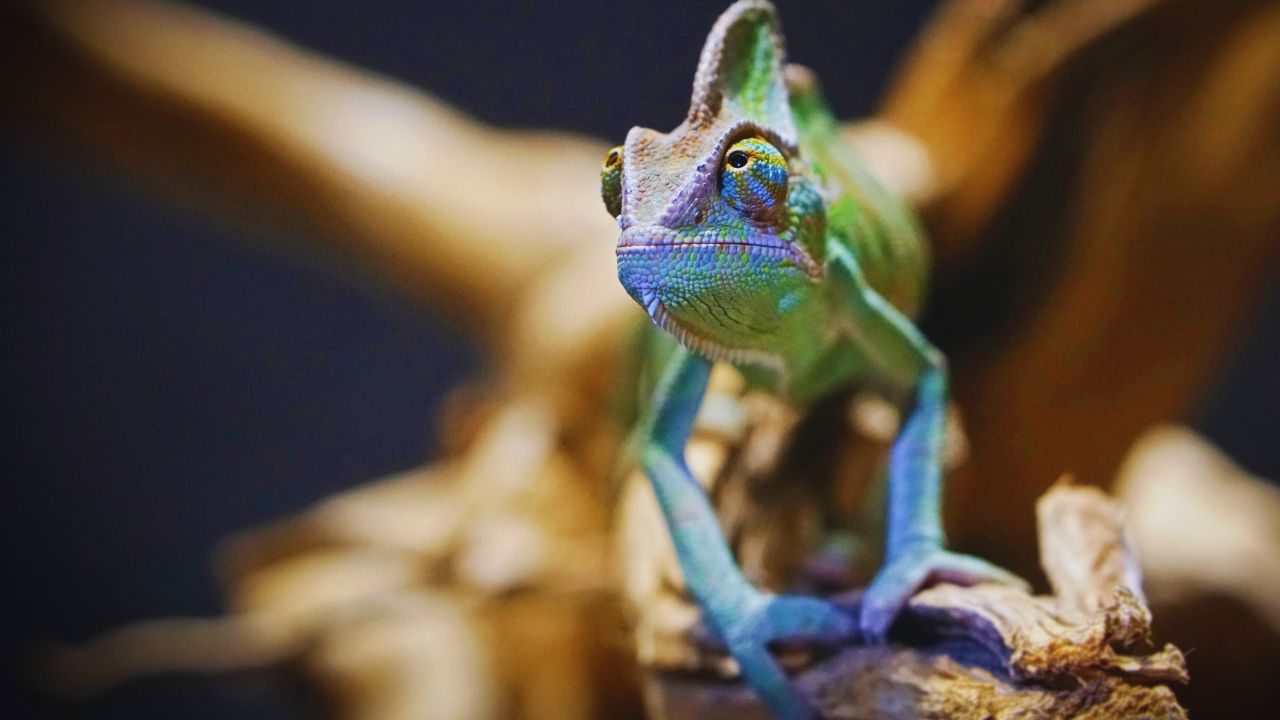The amazing ability of chameleons to change color and fit in with their environment makes them interesting animals. Male and female chameleons vary from one another in most cases in a subtle way, although one obvious difference is size. Male chameleons tend to be bigger and wider than female ones. While adult females typically measure between 14 and 18 inches long, with some being slightly less than 12 inches, adult males may reach up to 24 inches in length. But there are plenty of anomalies in nature, and the finding of the nano-chameleon is among the most noteworthy.

Overview of the Nano-Chameleon
| Aspect | Details |
|---|---|
| Scientific Name | Brookesia nana |
| Location | Sorata Massif, Northern Madagascar |
| Size | Male: 0.86 inches (head to tail), Female: Slightly larger |
| Habitat | Dense tropical forests of Madagascar |
| Diet | Mites and springtails |
| Discovery Year | 2021 |
| Discovering Team | German-Madagascan research group |
| Camouflage | Blotchy brown coloration |
| Reproductive Status | Male is sexually mature; Female carries eggs |
| Endangered Status | Considered endangered due to limited population and habitat destruction |
| Estimated Lifespan | Approximately 10 years |
| Conservation Importance | Highlights the need for habitat protection and biodiversity conservation in Madagascar |
Knowing About the Nano-Chameleon
The very small species of chameleon known as the nano-chameleon, or Brookesia nana in scientific parlance, was found in the deep tropical woods of northern Madagascar, specifically in the Sorata massif area. These tiny lizards are barely bigger than a grain of rice, and they can fit easily on the tip of your finger.
Perhaps the tiniest reptile in the world is the nano-chameleon. Though small in size, it has the amazing ability to use its unique tongue—a feature of chameleons—to grab its food, which includes mites and springtails.
The Identification of Nano-Chameleons
In 2021, a new subspecies of chameleon was discovered, which may be the tiniest reptile on Earth. This discovery sent shockwaves across the scientific world. This amazing discovery was found by a group of German and Malagasy experts who were investigating Madagascar’s jungles. When they found two of these little lizards, they were amazed at their size.
The Bavarian State Collection of Zoology in Munich states that the male nano-chameleon, Brookesia nana, is one of the tiniest of the about 11,500 known species of reptiles, with a body length of just half an inch. The male nano-chameleon is around 0.86 inches long from head to tail.

After a more thorough examination, scientists discovered that these nano-chameleons use their little but powerful tongues to spend their days searching the forest floor for mites. They hide among the blades of grass at night to avoid being eaten by predators. It’s interesting to note that the nano-chameleon’s habitat is linked to other wooded regions in northern Madagascar, indicating the existence of a distinct ecosystem supporting such tiny living forms.
The small size and lack of previous information about the species of nano-chameleons first prompted scientists to doubt whether the creatures they had found were completely developed. But scientists were able to prove that the female was carrying eggs and the male was sexually mature after making extensive observations and utilizing cutting-edge microCT scanning equipment. These results confirmed that the nano-chameleons were mature adults despite their small size.
Evolutionary and Ecological Significance
| Aspect | Details |
|---|---|
| Evolutionary Adaptation | Miniaturism is potentially due to environmental pressures and habitat specificity |
| Comparison to Other Species | Slightly smaller than Brookesia micra, another miniature chameleon |
| Camouflage Mechanism | Brown blotchy coloration aids in blending with the forest underbrush |
| Predator Avoidance | Hides in grass blades at night to evade predators |
| Habitat Connectivity | Found in a forest connected to other northern Madagascar forests |
| Research Methods | A microCT scan confirmed maturity and reproductive status |
| Conservation Challenges | Threatened by forest loss and limited population |
| Unknown Factors | The exact cause of its small size remains a mystery; further research needed |
| Significance for Science | Provides insight into the mechanisms of evolution in isolated environments |
| Potential Future Research | Further studies on diet, behavior, reproduction, and habitat interaction |
The Enigma of Their Dimensions
The reason for the nano-chameleon’s tiny size is yet unknown. The Brookesia micra, a somewhat bigger species of little chameleon, is the only chameleon that is smaller than the Brookesia nana. Although the exact causes of the nano-chameleon’s minuscule size are still unknown, scientists believe that it may be an evolutionary adaptation related to its unique environment.

In secluded or niche habitats, such as the woods of Madagascar, the phenomenon of miniaturism—species evolving to become smaller—occurs often. Predation forces, few supplies, or other ecological variables may have influenced these chameleons’ development toward such tiny sizes. This evolutionary process may have produced the Brookesia nana, which has adapted to its surroundings in ways that are still being studied.
Are chameleons in danger?
The loss of habitat and changes in the environment pose serious dangers to chameleons in general, and the nano-chameleon is no different. These small chameleons were discovered in Madagascar, a biodiversity hotspot with many rare species. However, deforestation and habitat degradation represent major threats to wildlife in Madagascar.
Research found that the loss of trees in continental Africa is seriously endangering five species of chameleons. While some species are in imminent danger of becoming extinct, like the Drakensberg dwarf chameleon, others, like the tiger chameleon, are not. But because of its relatively small number and the continuous threat of habitat loss in Madagascar, the nanochameleon is listed as endangered.
The significance of conservation efforts in Madagascar has been underscored by the discovery of the nano-chameleon. Preserving these amazing animals requires safeguarding the surviving forests and their unique residents. The nano-chameleon serves as a reminder of the interdependence of the ecosystems on our world and the pressing need for conservation efforts to protect these little but important species.
Interesting Details Regarding Nano-Chameleons
Many things about the nano-chameleon are still unknown since it was just recently found. Still, some fascinating information has come to light from the preliminary investigation.
The blotchy brown coloring of the nano-chameleon is well recognized, and this probably helps it blend in with the woodland underbrush. Many species of Brookesia have this color pattern, which helps them blend in with their environment and ward off predators.
Fascinatingly, females tend to be bigger than males in the majority of Brookesia species; this is also the case for the nano-chameleon. Given that many vertebrates grow larger as they develop, it is unknown why the nano-chameleon is so small in size. Miniaturism in this species is thought to have developed as a result of environmental stressors and habitat loss.

Nano-chameleons seem to have a rather lengthy lifetime for such tiny organisms, despite their small size. According to current estimations, they can survive for around ten years, but further study is required to confirm this and get a deeper understanding of their life cycle and behavior.
The Nano-Chameleon Discovery’s Significance
There are several reasons why the finding of the nano-chameleon is noteworthy. First of all, it contributes to Madagascar’s vast biodiversity, a place renowned for its unusual and often endangered fauna. Furthermore, it poses significant queries about the development and adjustment of species in solitary settings. The nano-chameleon is an intriguing topic for more research because of its small size and unique habitat needs, which provide insights into the workings of evolution and the effects of environmental changes on species.
The nano-chameleon also acts as a reminder of the vast variety of life on Earth and the many species that are yet unknown or poorly understood. Every new finding broadens our knowledge of the natural world and emphasizes how crucial it is to preserve it.
Conservation and Ecological Concerns
Research on Nano-Chameleons
We should anticipate learning more about the nano-chameleon and its function in Madagascar’s forest ecology as study progresses. Further research on its feeding, behavior, reproductive patterns, and relationships with other species may provide further insights. Furthermore, conservation initiatives will be essential to guaranteeing the survival of this little reptile in Madagascar as well as other endangered species in the face of persistent environmental difficulties.

Researchers and naturalists alike are fascinated by the nano-chameleon, which is now one of the tiniest and most fascinating reptiles known to science. Those who study this little chameleon will surely continue to be fascinated and motivated by it as more information becomes accessible.
To sum up, the finding of the nano-chameleon is evidence of the marvels of nature and the need of further research and preservation. This little species serves as a reminder of the amazing variety of life on Earth and the need to preserve it for future generations due to its unusual adaptations and enigmatic beginnings.




